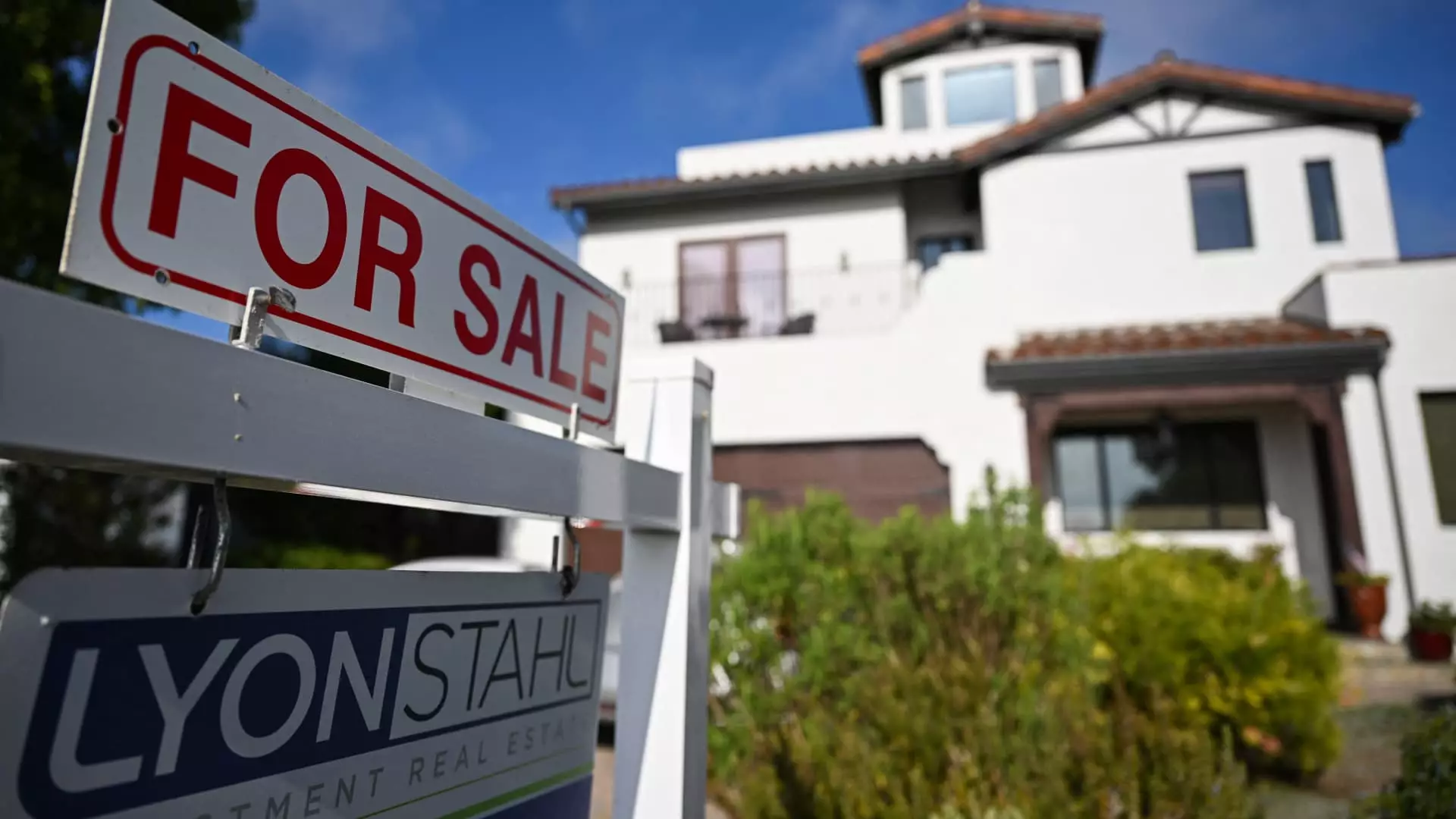The recent dip in mortgage rates, which fell to a notable 6.63% following the fervor of a new tariff announcement by the Trump administration, is the latest twist in an already convoluted housing narrative. On the surface, this might seem like good news for prospective homeowners, particularly as spring—a traditionally bustling season for real estate—comes into full bloom. However, it’s essential to analyze the implications of this dip within the broader context of economic instability and market manipulation.
Mortgage rates are inextricably linked to the fluctuations in the bond market, and the recent sell-off of stocks has compelled investors to seek refuge in safer investments like bonds. This action directly translates into lower mortgage rates, but the relief is distinctly bittersweet. While the decline brings a glimmer of hope, it serves as a mere bandage over festering wounds puncturing the housing market—namely, soaring prices and diminished affordability for the average American.
The Reality of Affordability: A Sinkhole for Most Buyers
Despite the recent dip in mortgage rates, the overwhelming reality is that homeownership remains a distant dream for a vast majority of Americans. A staggering 70% of households are now unable to afford a $400,000 home; this is no trivial statistic. This porous barrier to entry means that about 94 million households are sidelined, unable to join the ranks of homeowners even as new housing invades the market.
Consider this: to snag a home priced at a seemingly modest $200,000 under the current rate of 6.5%, one must possess an income of at least $61,487. The American landscape is changing, and projections indicate that in just a couple of years, around 52.87 million households will languish below this income threshold, able to afford homes only in the lower price range at a time when the estimated median home price is stealthily creeping towards $460,000. The alarming reality is that as wages stagnate and inflation surges, home prices remain stubbornly inflated—leaving aspiring homeowners out in the cold.
Market Dynamics: Supply vs. Demand Fiasco
One might wonder, with the emergence of new listings—rising by a notable 10% annually—why there remains a crisis in affordability. The answer lies in the nature of available supply. While home inventories are increasing, the available options rarely align with the demands of would-be buyers looking for affordable living. We’re witnessing chronic underbuilding, stemming from economic turmoil since the Great Recession, which has led to an ongoing shortage of homes within affordable price brackets.
Even when homeowners express willingness to list their properties, they are often seeking top dollar, driven by fears of market peaks and economic instability. Agents like Matt Ferris note that many sellers in the Northern Virginia area are acting preemptively, fueled by concerns about job security and lifestyle changes amid shifting work policies. Unfortunately, this has created a skewed market, where potential buyers are left grasping at straws in a field of overpriced offerings.
Changing Buyer Sentiment: A Market in Flux
Moreover, buyers are now hesitant, caught in a web of economic uncertainty that has resulted in declining pending sales. Recent data illustrates that signed contracts on existing homes dropped by 5.2% from the previous year among the nation’s largest metropolitan areas. Some markets have been particularly hard hit: Jacksonville and Miami, Florida, saw staggering declines of 15.1% and 13.7%, respectively, largely thanks to the reversal of pandemic-era migration trends.
Economic strains, coupled with the persistent high costs of homeownership, signal a sluggish response from buyers. Danielle Hale, chief economist for Realtor.com, encapsulates the climate well, commenting on a market that is adjusting and providing shoppers with more choices. However, this raises a pertinent question: Is there such a thing as an empowered consumer within a landscape rife with financial anxiety and inflated expectations?
The Long Shadow of Inaccessible Housing
The reality we face is alarming. As mortgage rates have dipped in concert with other economic indicators, they also highlight the societal fracture over access to homeownership. For affluent buyers, the landscape may seem promising, but for millions of other Americans, this merely amplifies feelings of exclusion. The housing crisis we are experiencing is emblematic of a system deeply flawed—a situation characterized not by a lack of available homes but by a profound mismatch between what is available and what can be afforded.
Ultimately, as the 2025 housing market looms ever closer, abiding economic disillusionment stands to fuel further disparities. Without immediate intervention in housing policy that prioritizes affordability and equity, the dream of homeownership will remain unattainable for too many—a lose-lose proposition that threatens to destabilize not just markets but our society at large.

